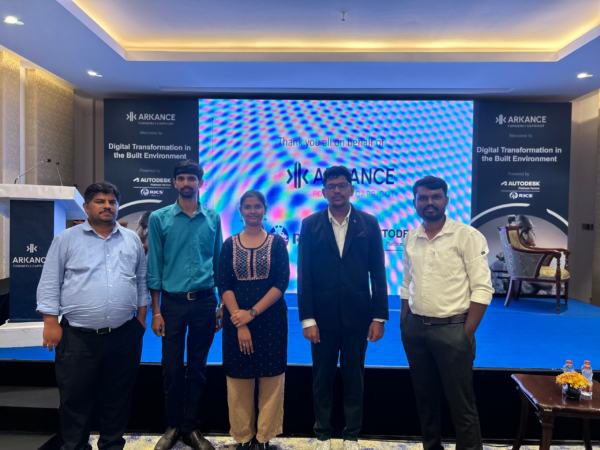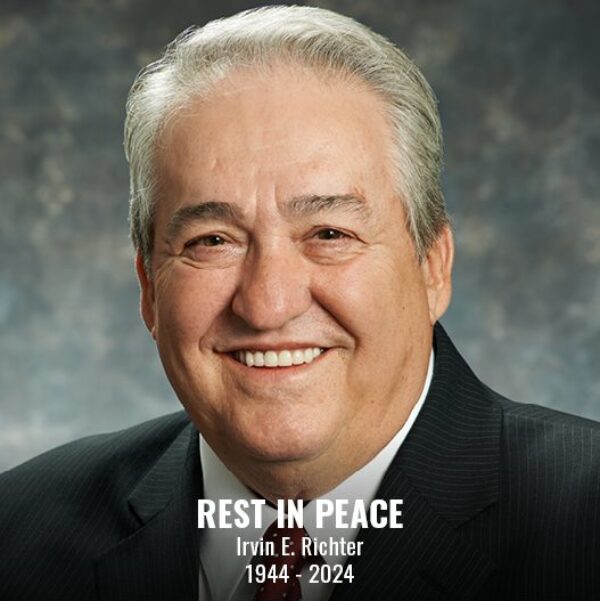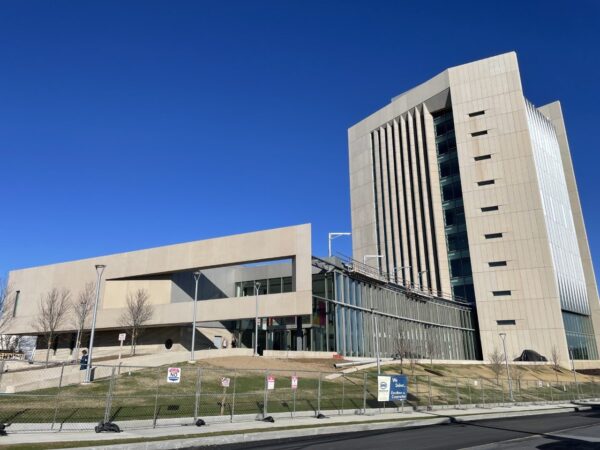
July 15, 2024 | Articles
Construction’s Digital Transformation & The Tools of Modern Project Management

Human lives hold priority in the recovery work that comes in the wake of a natural or man-made disaster. Hundreds of people died and many more suffered injuries and loss of property after Hurricane Sandy slammed the U.S. East Coast states in October 2012. The storm also caused billions of dollars in damages to infrastructure, businesses, and private properties along its path. The hardships that the families of the Belle Shores Condominium faced were a microcosm of what thousands of others had to deal with as they waited for disaster recovery work to be completed.
Belle Shores, a six-building residential complex just a block away from the Atlantic Ocean in Rockaway Park in Queens, New York, faced some of the most immediate devastation during Sandy primarily due to its location.
“There were 26 displaced families, who had to find alternative housing by renting hotels or living with family during reconstruction efforts,” says Hill International Project Executive Ian Parks. “It was an extremely trying time for them. Understandably, they wanted to get back to their normal lives as soon as possible. However, the scope of the damages demanded time to secure Federal Emergency Management Agency (FEMA) funding and rebuild.”
As the project manager (PM) at Belle Shores, Parks was the most visible person on the reconstruction project. “There was a lot of pressure to perform because the project meant so much to the people displaced by the storm,” he says. “The human factor is important for the PM to consider on any project. But the scope of this was more than anything else I’ve ever had to deal with in my professional experience. Residents were suffering. They were in recovery mode and wanted answers. So we had to maintain transparency. I acted in part as a liaison between the construction team and the homeowners by trying to answer some of their tough questions.”
Hill’s Tasks and Solutions
The flood damage at Belle Shores was extensive. Hill’s PM contract included managing the design, bidding, and reconstruction of all 26 ground-level duplexes; replacement of mechanical and electrical systems for all 78 units; and other site restoration. The contract also called for overseeing mold remediation, salvage and gut rehabilitation of first floor and basement levels, roofing repairs, clean-out of storm drainage, and replacement of irrigation and landscaping. Hill started work on the recovery project in January 2013 and completed its tasks by the summer of 2014.
Parks ran the project from the initial stage until March 2014. That portion included architect selection and design through the two phases of construction and substantial completion. Parks says: “When I first landed at Belle Shores and saw the destruction first hand, I knew that this was going to be a tough assignment, even notwithstanding the emotional difficulties. There was mold growing everywhere inside the condo units. This had to be addressed immediately as a health safety issue before other work could be undertaken.”
Hill advised the condo board of options and released an early remediation package to remove mold, gut the units to the metal studs and disinfect. Upon completion of the preliminary work, an environmental engineer was also hired to verify air quality within the spaces and inspect to ensure that mold growth was completely remediated.
Accomplishing Urgency
Given the urgency of the project, Hill recommended the project be split into multiple phases with separate contracts: Phase 1 was focused on demolition and mold remediation; and Phase 2 on the reconstruction of the 26 condos.
The first contract was awarded in February 2013. This allowed time to design and bid the interior reconstruction work, while mold remediation and demolition began. The second contract was issued in May 2013 with reconstruction continuing seamlessly. This helped move the project along as quickly as possible.
The project team was able to access the required architects, contractors, and all necessary construction materials in a timely way, despite the calamity. This too helped to move work along quickly.
Hands-On Help
There were some unexpected issues that Hill had to deal with. “About mid-way through the project, funds were depleted and the general contractor demobilized from the site,” Parks says. “The project was at a stalemate until more funds arrived. Hill worked with the condo board to alleviate this cash flow issue and reached an agreement with the general contractor to remobilize and continue construction.”
Another unexpected challenge was the need to deal with gas pipeline leaks. “Salt-water based deterioration of pipes presented itself a year after the hurricane,” Parks says. Hill quickly collaborated with a plumbing contractor to isolate leaking gas pipes, provide corrective action, and conduct testing to ensure that all leaks were permanently repaired.
In an effort to alleviate the condo owners association’s issues with limited funding, Hill took on a larger role in facilitating site inspections and reconstruction scope verifications for flood and wind insurance claims. “We would walk with insurance assessors and offer our own observations about the damages during the inspections,” Parks says. This added a pair of expert eyes and provided a careful lens over subtle aspects of the damage and revealed things that might have otherwise gone unnoticed. This, in turn, made sure that more money was available to the owners for reconstruction.
In addition, Parks’ team helped the condo owners’ association successfully apply for a Small Business Association loan. This was a conduit for needed funding for the Belle Shores reconstruction.
Still, money was tight. Parks says: “It was a reconstruction in kind. There were no funds available, at that point, for careful mitigation efforts that might have been required in a larger reconstruction program.” For instance, the team’s efforts helped to reconstruct the mechanical, electrical, and plumbing infrastructure; but these remained in the basements of the facilities, where they had been, and remained vulnerable to future storm damage.
“It’s hard for the homeowners to win in this kind of scenario,” says Parks. But nevertheless, in the face of personal hardship and trauma, the project management professionals on the disaster recovery team were able to expedite the reconstruction process with a carefully designed construction schedule and overcome the limits of funding. “We moved through challenges as quickly as we could to get residents home,” he added.
Parks reaffirms: “It was a success. Within the budget we could work with, we got the job done. And people were able to get back into their homes more quickly than was possible through some of the larger reconstruction efforts that happened after Sandy.”
A Learning Experience
“For Hill, a big takeaway from the Belle Shores contract was the door that opened up thereafter,” Parks says. “This was the first Sandy recovery project we worked on. The team became very familiar with the challenges that face disaster recovery projects and specifically the challenges that faced Sandy recovery projects. We cultivated valuable experience on work with rapid deadlines and emotional stakeholder involvement. This was important for us when Hill led an entire Sandy-related program in New York and New Jersey.
“But much more importantly, the Belle Shores project helped get people back into their homes. And if we didn’t know it already, we certainly learned that people are the priority in disaster recovery projects.”
About the Author
Hill Project Executive Ian M. Parks has more than 15 years of project management and field engineering experience. His areas of expertise include project and construction management in urban areas with complex building sites and sequences, including work within railroad zones of influence. He has successfully led twenty-one projects through design, procurement, and construction.
Hill International, Inc.
Hill has experience providing and managing storm recovery efforts, encompassing work across the country for both public and private sector clients. Our comprehensive approach to understanding the interrelationships inherent in a major recovery effort, our aggressive approach to managing emergency response projects and our highly professional staff, trained to focus on the individual needs of our clients, are key to our success and have brought us substantial repeat business.
Share

July 15, 2024 | Articles
Construction’s Digital Transformation & The Tools of Modern Project Management

July 10, 2024 | Articles
GC/CM at Post Falls: Managing Avista’s North Channel Dam Rehabilitation Project

June 23, 2024 | Articles
Irv Richter – An Innovator, A Pioneer, A Leader (1944 – 2024)

June 14, 2024 | Articles
Environment of Care Standards – Meeting the Challenge (Part Two)

June 13, 2024 | Articles
PMO for Public Transit Project Success: The Reopening of Philadelphia’s Franklin Square Station

June 7, 2024 | Articles

May 17, 2024 | Articles
Hill Interim Federal Market Sector Leader Jane Penny Receives Golden Eagle Award

April 11, 2024 | Articles
A Model Move: Managing Move-In at the Sylvia H. Rambo U.S. Courthouse